Following the story of the Fokker F27
Last week I wrote about the Fokker F27 mk 500 Friendship that came off the runway at take-off at Bournemouth Airport.
Rudy commented on his experience flying the F27 in the comments of that post.
The F27 was still a very reliable workhorse when I flew it. In widespread use as a cargo aircraft, they were in use with quite a few “feeder” cargo operators. I flew the F27 until 2003. Most feeder flights were at night.
Now I want to jump forward a few years to the 2nd of February 2008, when the same aircraft was involved in another incident on the ground.
The F27 now had the registration TC-MBG and was operated by MNG Airlines, a Turkish air cargo airline established in 1996 to offer scheduled cargo flights to Germany and England. MNG Airlines was Turkey’s first private cargo airline and recently celebrated 25 years of service.

However that chilly February in 2008, the 37-year-old F27 had been subcontracted by another operator at Edinburgh for a night cargo flight back to Coventry.
Two days before the accident, the captain and a first officer arrived at Edinburgh to take the F27 to Coventry. It was parked at the north stand, facing outwards to protect it from the high winds. They started the engine at the stand and taxied to the taxiway leading to the runway for their flight to Coventry, which was uneventful.
The night before the accident, the captain and a different first officer flew the F27 from Coventry, England to Edinburgh, Scotland. The captain was an ATPL with 4,000 flight hours, 2,745 on type. This flight, and the scheduled cargo flight back to Coventry, were training flights for the first officer.
The flight to Edinburgh was uneventful and they left the F27 safely parked at Stand 201 on the North Cargo Apron, ready for the flight back to Coventry the following evening.
After the flight crew went off duty, the handling agent became concerned about the Edinburgh weather, which was forecast for high winds. They took the decision to re-position the F27 to face into the wind, with the nose pointing out of the stand, facing down a slight slope.
That evening, the flight crew reported for duty at 19:00 with a third crew member, a company engineer. They had about two hours before their scheduled night flight to Coventry at 20:50 (ten to nine).
Two ground handlers were there to oversee the departure: a marshaller, who supervised the start-ups, and his assistant.
As the flight crew boarded the aircraft, the ground crew connected a Ground Power Unit (GPU) to the right side of the F27 to provide electrical power until the engines were running. The Ground Power Unit was towed on a tractor to the aircraft and unhitched from the tractor with the towbar raised to a near vertical position: a modification made by the handling agent to reduce the risk of towing a unit away while it was still attached the aircraft.
The cockpit voice recorder began recording. The F27 was loaded and prepared for departure.
The weather had deteriorated and the aircraft needed to be de-iced, which caused a slight delay. Once the de-icing was completed, the engineer left the cockpit to inspect the aircraft and collect the de-icing certificate.
It was quarter past nine by the time that the flight crew had completed the pre-flight checklist. The first officer called on the Ground frequency to say they were ready to start the engines.
If the F27 had been parked normally, a tug would have pulled the aircraft away from the stand to the taxiway, where the flight crew would start the engines and then taxi on their own power to the runway. But as they were parked facing outward, it was easier to just start the engines and taxi forward rather than be towed away from the stand.
Once they’d received clearance to start the engines, he began running through the BEFORE START checklist with the captain. He called out “parking break”. This is the same sort of challenge and response as we saw last week: the first officer is asking if the parking brake is set and the captain then checks the parking brake and confirms that it is set (or sets it, if needed).
The captain’s recollection was that the parking brake was set, but he didn’t answer the challenge. That’s because at that moment, the company engineer returned with the de-icing certificate and told the captain that the nosewheel was chocked.
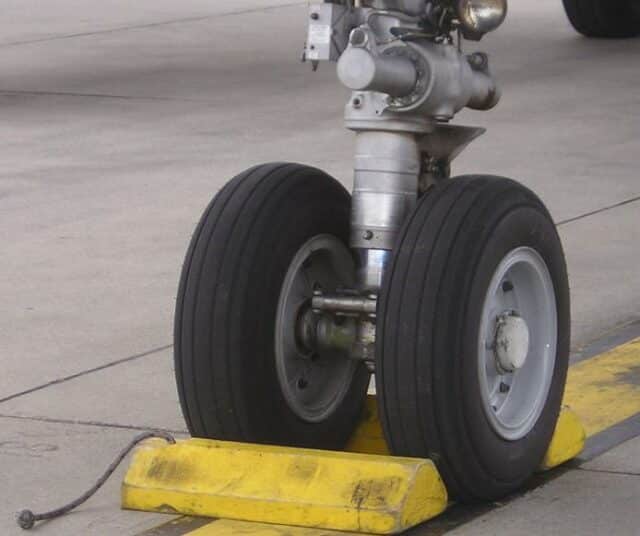
Aircraft wheel chocks by Wikipedia user Dtom (CC BY-SA 2.0)
When parked, aircraft wheels are held stationary through chocks, which are angled blocks made of wood or plastic which can be wedged against the tyre to keep it from moving. With the parking brake set and a chock or chocks placed against the tyres, it is safe to start the engine without concern that the aircraft will roll forward.
But we don’t know if the parking brake was actually set, because the flight crew never went back to the BEFORE START checklist.
The captain signalled the marshaller that he wanted to start the engines. The marshaller signalled back clearance to start. The flight crew started the engines.
Remember the pneumatic system? After the engines were running, the captain checked the pneumatics. The main pneumatic system and the brake pneumatic system were at 1,600 psi, lower than expected, but still above the minimum 1,500 psi listed in the Operations Manual for the AFTER START checklist.
Normal pressure was around 1,800 psi, and so the captain increased the power on the engines to restore the pressure level.
Last week in the comments, Rudy explained the situation.
When taxying, of course we used the nosewheel steering and the brakes. At busy airports, this could cause a loss of pressure and we would watch it constantly. It could require us to delay take-off and stop at a convenient location — usually a holding point — to rev up the engines in order to build up pressure to the required minimum. Don’t forget that if the pressure was insufficient, in case of a rejected take-off, we might run out of brakes and runway or, if an engine failed after take-off we might not have been able to raise the gear.
As the captain increased the engine power to recharge the pressure, he signalled the marshaller, making a “T” with his hands which he then pulled apart, to indicate that the marshaller should disconnect the Ground Power Unit.
The first officer started the AFTER START checklist.
The marshaller went to help his assistant detach the Ground Power Unit. As he reached the side of the aircraft, he saw the aircraft slowly shift forward. He shouted a warning to the assistant and they both ran clear of the aircraft, which continued to roll forward.
Inside the cockpit, the flight crew were still working through the AFTER START checklist and had not noticed that they were moving. This time, their challenge and response was interrupted by a loud BANG from the right side side of the aircraft.
The startled captain looked at the instrument panel and saw that the right engine had failed. He quickly shut down the left engine and pulled the shut-off handles for both engines.
Once the engines were stopped, he exited the aircraft to find out what had happened, quickly followed by the engineer and the first officer. The captain must have been wondering how they could have moved forward, as the first thing he reported noticing was that there were no chocks anywhere near the nosewheel.
Then he turned and saw chaos.
The Ground Power Unit was in pieces, scattered everywhere, destroyed by the engine propeller. The propeller had also struck the tractor and the flying shrapnel had broken the rear window. The right nacelle was nearly detached from the wing. Twisted to the side, the propeller had even managed to strike and break an aircraft window. Fuel dripped from the engine, forming a puddle on the ground beneath.
Edinburgh’s Airport Fire and Rescue Services arrived almost immediately. They saw no sign of any chocks and immediately put chocks on every wheel. They then laid a blanket of foam beneath the right engine to prevent the fuel from igniting. They found the power lead from the Ground Power Unit trailing between the unit and the aircraft, instead of folded into the tray of the unit’s chassis. This same tray is used to store chocks.
The report does not report what the captain did after this but I suspect he found a quiet place to put his head in his hands and question his life choices.
Things were about to get worse for him. It turned out that Edinburgh Airport had issued a directive the previous year, which specifically prohibited starting up at the stand.
‘Straight pushbacks are forbidden from any North Cargo Apron stand. If any aircraft on these stands has been previously repositioned to face out (e.g. because of prevailing wind conditions), such aircraft must be pulled off stand and lined up on the taxiway centreline before starting engines.’
Emphasis mine.
This directive had been sent out electronically to all general managers and station managers. In the case of a new operator, such as the company that had subcontracted the aircraft, the airport assumed that the handling agents would bring the notice to the operator’s attention.
The captain did not see the directive until the 25th of February 2008, twenty-four days after the accident. He had no idea that taxying from the stand on the aircraft’s own power was prohibited.
In fact, when he arrived at Edinburgh two days earlier, he found the aircraft parked exactly the same way on the same stand. The ground controller had given him clearance to start the engines and taxi from the stand on that occasion as well.
The controller on duty was working both Tower and Ground frequencies that night. When the first officer called him for permission to start, he struggled to understand the call-sign as the transmission quality was poor. He couldn’t see the aircraft from his position in the control tower at night. When he approved the engine start, he had no idea that the aircraft was parked at the stand and facing out.
Although the report does not say, it was probably the case that two nights before, the controller on duty also did not realise where the aircraft was stopped and didn’t think anything of clearing the aircraft to depart on its own power. It is not the controller’s job to ensure that flight crew are complying with airport procedures; however, it’s understandable that the captain accepted this clearance, having never seen the directive.
The captain felt sure that he’d checked the parking brake was set during the BEFORE START checklist, even though they were interrupted. And of course, the engineer had explicitly said that yes, the chocks were in place.
The same marshaller had supervised the F27 at the North Cargo apron on both occasions. He believed that when he went to help his assistant remove the Ground Power Unit, the aircraft’s nosewheel was chocked. He said that they all felt under pressure as the aircraft had been delayed for de-icing, so they were trying to expedite its departure.
The F27 was getting on in years and so was its Flight Data Recorder, which was not yet recording at the time of the incident. The Cockpit Voice Recorder started when the Ground Power Unit was attached, recording the captain instructing the first officer. Most of the checklists were completed in an unhurried manner, despite the fact that they were running somewhat late. The engines started normally, stabilising at about 8,000 rpm. Then the captain’s voice could be heard: “A little more power to charge the system a little bit.”
About 20 seconds later, there was the abrupt sound of the propeller striking the Ground Power Unit: two loud bangs followed by a “louder mechanical sound” described by investigators as likely the engine breaking free of its mounting.
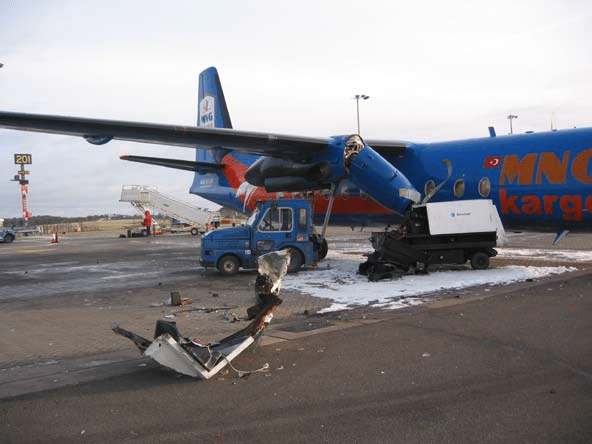
This photograph taken after the accident shows the wreckage of the Ground Power Unit. One chock was found in the Ground Power Unit debris.

A second chock was marked on the photograph after it was found further out, about half a wing’s distance from the aircraft.
The maintenance assistant had clearly just started to disconnect the Ground Power Unit: the power receptacle door was closed and the power lead was lying on the ground between the unit and the aircraft. When the propeller smashed into the unit, it tore off the sliding cover door of the storage tray, which landed 7-8 metres away (about 25 feet).
The captain had specifically noticed that the brake pressure was low, which could indicate a leak. So as a part of their investigation, the AAIB charged the F27s pneumatic system to 2,000 psi, planning to use a tug to check whether the parking brake would hold. However, it took an hour for the tug to arrive and by this time, the brake pressure had decayed to about 1,100 psi, below the minimum. There was no point in testing the parking brakes at this pressure. This didn’t help to confirm or deny whether the parking brake was set. A further test showed that over fifteen hours, the time that the aircraft was parked, the stored pressure dissipated completely. But the aircraft had of course taken a fair amount of damage in the meantime, so it is difficult to know how much of a leak there was on that day before the accident.
Increasing the engines to 8,600 rpm would not normally be enough to shift the aircraft facing into the wind. But the stand where the aircraft was parked had a slope of about 1.5% and once the F27 was turned to face into the wind, it was parked downhill. So although the propeller only added about 55kg of force, the weight of the F27 down the slope added about 260kg of force. Combined, there was enough force to start the aircraft rolling forward.
This leaves us with a number of unresolved issues.
Was the parking brake set?
The aircraft had been repositioned while the crew were away, so someone else would have disengaged the parking brake and, one would hope, set it again once the aircraft was facing nose out
The cockpit voice recorder shows that the flight crew were interrupted as the first officer had reached parking brake set challenge on the BEFORE START checklist. The captain believed that the brake was set correctly.
It is reasonable to believe that as it became clear that the F27 had rolled forward, everyone would instinctively glance at the parking brake, but there was no comment recorded on the CVR that it was not set, which seems like it would be the first thing they noticed.
On the other hand, the forces acting on the aircraft were not that strong and other than the leak, there did not appear to be anything wrong with the parking brake.
Was the nosewheel chocked?
The engineer clearly stated that the chocks were in place. The captain had signalled the ground crew to remove the Ground Power Unit but not the chocks. The marshaller believed that the chocks had been in place and was confident that he did not remove the chocks but had moved to the side of the aircraft to help disconnect the Ground Power Unit.
Search and rescue did not see any chocks near the nosewheel. Two chocks were found, but they were within the wreckage area of the Ground Power Unit. They could have been stored in the tray of the unit chassis and then thrown clear when the propeller struck the unit.
There was so much debris and so many different people on the scene, it was impossible to know.
The AAIB concluded that the chocks may have been set and then either slipped out from the force of the aircraft movement on the downward slope or even that someone had removed them prematurely.
Did the pneumatic system have a serious leak before the accident?
A 37-year-old F27 is expected to have pneumatic system leaks. Further, the AAIB proved that after the accident, the F27 suffered from a leak strong enough to dissipate the entire stored pressure while parked at the stand after being repositioned.
The charging system could generate 1,000 psi every twenty minutes at 10,000 rpm. If the brakes had lost pressure, 8,000 rpm, or even briefly 8,600 rpm would not be enough for the charging system to maintain adequate pressure for the brakes at that moment.
However, the captain recalled clearly that the brake pressure was over the minimum of 1,500 psi, which meant that the pneumatic pressure leak should not have been enough to cause the parking brake to fail completely.
I would say that the real problem was that the flight crew had started up on the stand, parked nose-out on a downward slope. If a tug had towed the aircraft onto the taxiway, as per Edinburgh Airport’s procedures, the slope would have been across the aircraft, so there would be no gravitational force pulling the aircraft forward. At 8,600 rpm, even with no brakes and no chocks, the aircraft would have remained in position.
The airport authorities believed that the handling agents would ensure that all operators knew about the directive and the handling agents thought that the airport authorities would send the directives directly to the operators. As a result, the operator had never been told that the aircraft needed to be towed away from the stand and lined up on the taxiway before starting the engine. The captain had no idea that he shouldn’t accept the ground controller’s clearance and start up the engines.
We will never know for sure whether the chocks were in place and whether the parking brake was set. The AAIB did not even have enough evidence to determine which scenario was the most likely.
They limited themselves to citing the contributing factors:
- The aircraft was facing down on a slight downward slope.
- The ramp was slippery from the rain.
- The flight crew increased the engine power to top up the pneumatic pressure.
- The airport’s directive that nose-out aircraft on the North Cargo Apron be towed to the taxiway centreline before starting engines was not complied with.
Sadly, this was the end of the road for this F27. After the damage to the right engine, the aircraft was written off after 37 years of service.
Today, there are fewer than twenty Fokker F27 Friendships in service around the world.
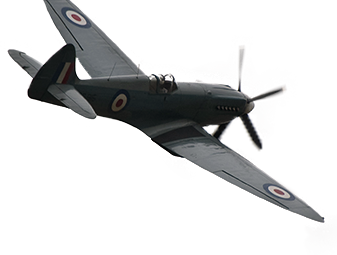


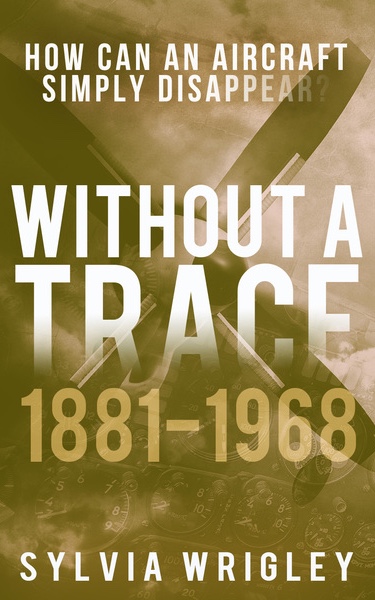
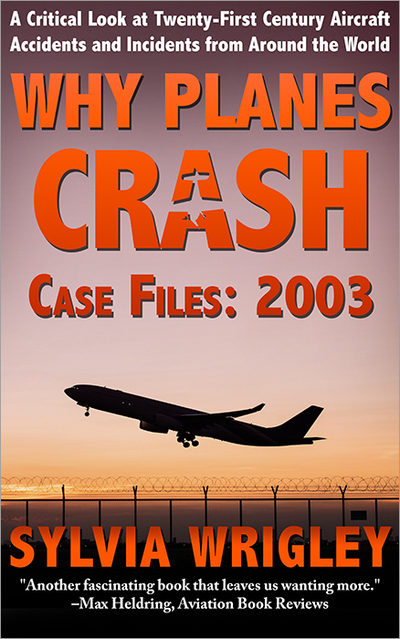
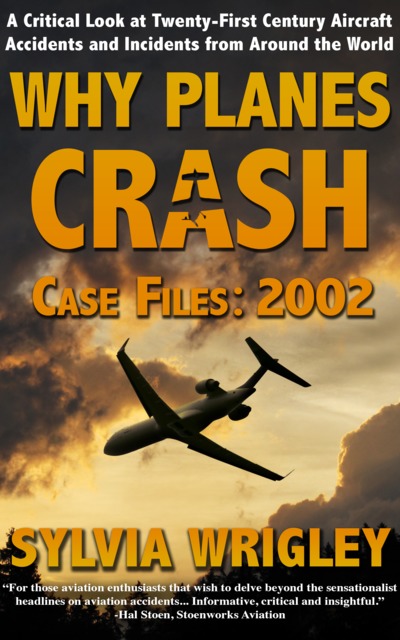
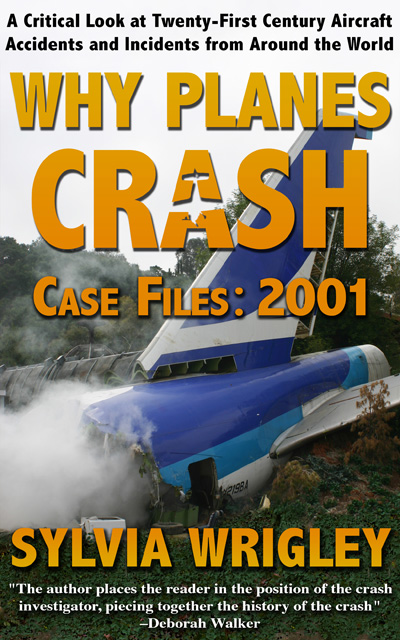

Love the clarity of this description. Glad that the aircraft was the only casualty!
With regard to the interrupted checklist, I have been told (if anyone can say definitely whether or not this is true I’d love to hear it) that the reason it’s a “check” list is not that it’s a list of things to be checked but that each item gets checked off (ticked off for those of us speaking en_GB) as it’s confirmed. Of course I realise that that’s a counsel of perfection and it doesn’t always happen in reality; one wouldn’t be expecting to be interrupted while running through it.
My 16th edition of Brewer’s Dictionary of Phrase and Fable says nothing either for or against this derivation.
The checklist I worked with as a student and lightplane pilot was a series of ?laminated? half-size pages held together with a couple of rings; in theory a pilot could have ticked off each item as it was done, but this would have involved cleaning up the list afterward for the next user. (Yes, there could have been single use lists; no, they wouldn’t have been a good idea — loose pieces of paper get blown away easily when you’re on a large flat space.) I suspect the same constraints applied in other uses, since a checklist is for a known (i.e., repeatable) set of tasks.
These days, I can see the checklist for a commercial aircraft being on an iPad or similar, with an alert if the user tries to close the list with items unchecked — but I wouldn’t expect that to be accepted easily.
It’s definitely true that most checklists have some “action items”, i.e. actions that the crew needs to perform, rather than things that the crew needs to inspect (“check”).
Does the F27 (or any other aircraft using pneumatic brakes) have a manual “handbrake”?
I’ve been trained as a (heritage) railway shunter, so know not to rely on pneumatic brakes when stabling vehicles as they likely will leak off. Handbrake plus scotches (railway chocks) on the downhill end.